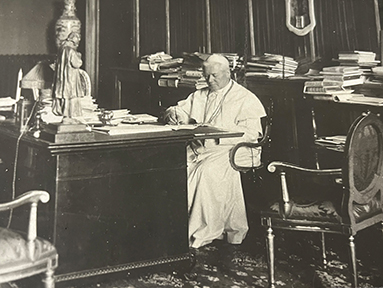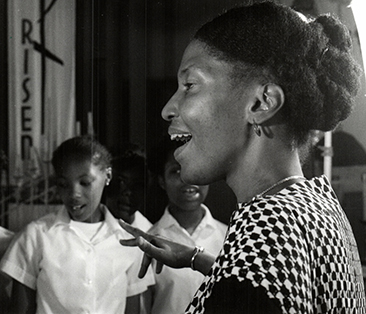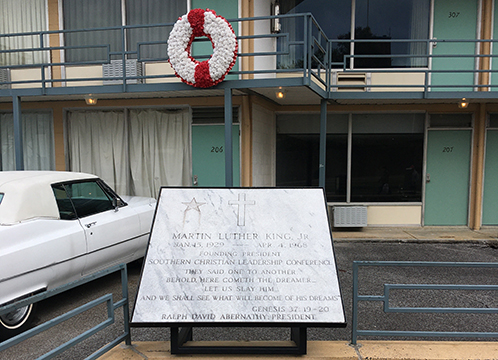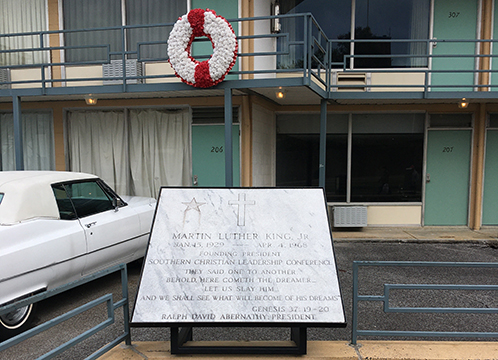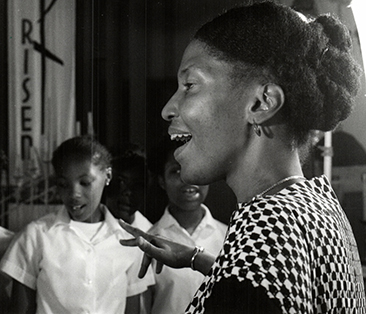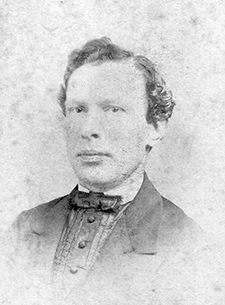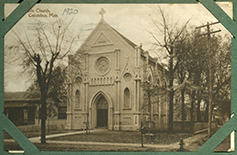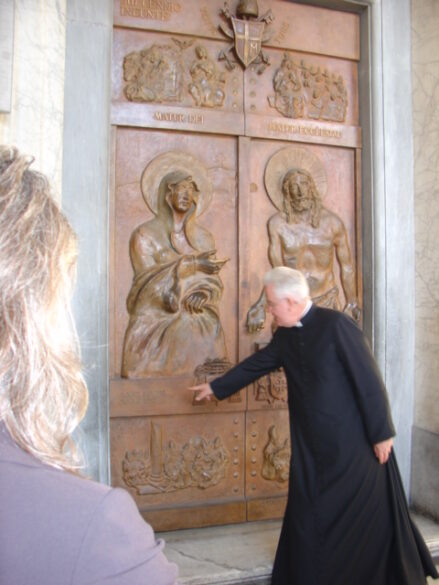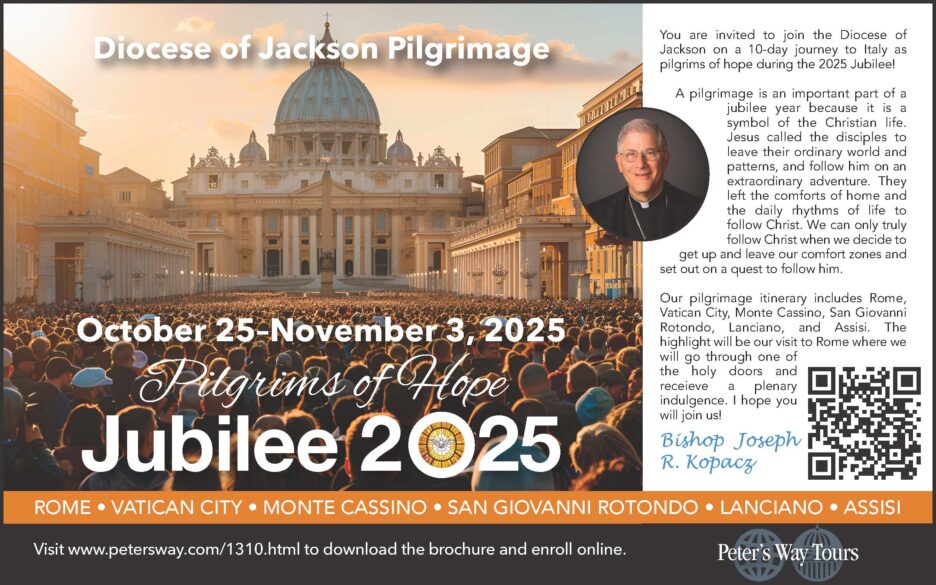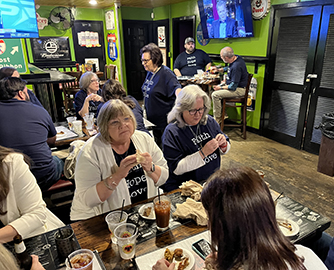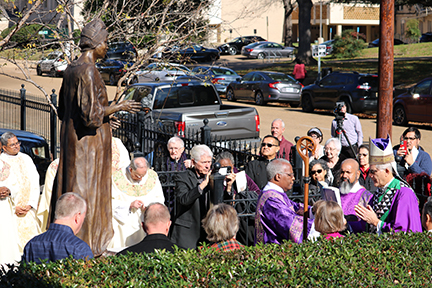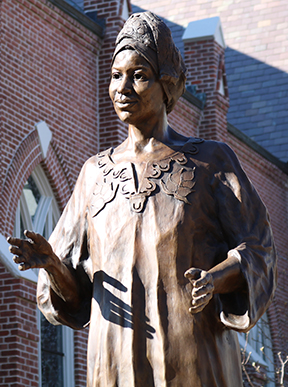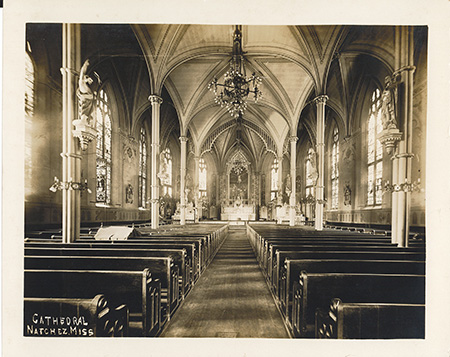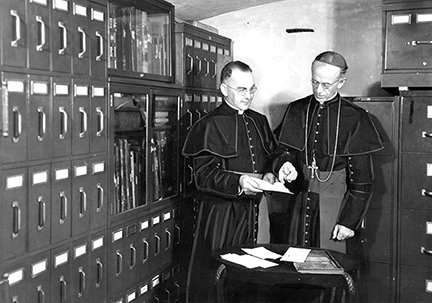From the Archives
By Mary Woodward
While I was in the diocesan archive vault a few days ago searching for an original copy of an agreement established with one of the religious orders serving in our diocese, I came across another historical document of great interest.
The archive vault is a small room on the ground level of our chancery building. It houses most of the permanent and historic paper records of our diocese. Inside the vault is a floor safe that holds these original contracts and agreements mentioned above along with the papal bulls of appointments of our bishops and their wills.

In the safe I found the document for which I was looking, but I also discovered Bishop Richard Gerow’s (1924-1966) ordination certificate from June 5, 1909. It is a large parchment with all the information from that Saturday in June 116 years ago. He was ordained at the Cathedral Basilica of St. John Lateran in Rome by Pietro Cardinal Respighi, whom the certificate identifies as the Vicar General of the Diocese of Rome.
Bishop Gerow studied at the North American College in Rome. In his recollections about his early years, he talks about coming home to Mobile in 1904 after graduating from St. Mary’s College in Emmitsburg, Maryland. Discerning God’s call for him, he approached his bishop and spiritual father, Edward Patrick Allen, about entering the seminary.
In the recollection, Bishop Gerow states he was expecting to be sent back to “the Mount” as they called St. Mary’s, but Bishop Allen had other plans. The good bishop told young Richard he would be going to Rome to complete his seminary training.
The North American College (NAC) was founded in 1859 as a place for seminarians from the United States. At that time [and now] Rome housed seminaries from countries all over the world. One could identify the seminary by the uniform of the student. Bishop Gerow describes the NAC uniform as a black double-breasted cassock with blue buttons and blue piping off center down the right.
The idea for the NAC came from the U.S. bishops of the 1850s. They wanted to establish a seminary in Rome where students could experience all that the Eternal City had to offer – history, art, churches, spirituality, and opportunities to learn about the church from countries around the world.
The bishops approached the pope of that time, Blessed Pope Pius IX, with the idea and pledged to provide support and funding from all over the U.S. Blessed Pius agreed and procured a stately building for the endeavor in the center of Rome on the Via dell’Umilitá. Bishop William Henry Elder, our bishop in 1859, was able to raise almost $2,500 for the establishment of the seminary, which was not a small sum of money in those days.
So, 45 years later, young Richard Gerow found himself on a ship to Rome to begin his journey to the priesthood. In those days when a young man went off to the NAC, he most likely would not come home until his studies were completed. So off he went for five years. After eight days at sea, he first landed in Ireland, the birthplace of his mother, where he spent several days touring around including kissing the Blarney Stone, before making his way down through the continent to Rome.
He describes arriving at Via dell’Umilitá where he was met and carted off to the summer residence for NAC students at the Ville Santa Catarina outside Rome near Castel Gandolfo. The Villa was purchased by the American bishops in the 1890s to give seminarians a place outside of Rome to rest from their studies, nurture their vocation in quiet prayer, and develop fraternal bonds that would last a lifetime. While at the Villa, Gerow was fitted for his NAC “uniform.” He received a hand-me-down cassock for daily use and the tailor fitted him for a new cassock to wear on special occasions.
“Alfredo, the shoemaker, was called to take my measure for a pair of shoes such as were worn by students in Rome,” Gerow writes in his reminiscence.
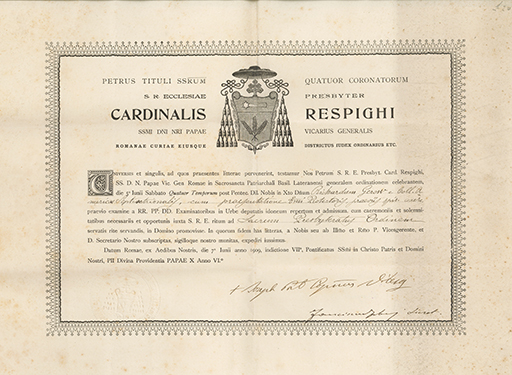
After his 10 days at the Villa, Gerow and the other NAC seminarians returned to Rome to settle in and begin their studies for the semester. He writes: “Soon the summer vacation at the Villa came to an end and the student body returned to the city of Rome to be ready for the opening of classes. New camaratas [cohorts] were organized and assigned to their quarters.”
“I was assigned to a camarata composed entirely of new arrivals except for the Prefect in charge and the Beadle, the assistant Prefect. Our Prefect … was Bill Farrell – one of the older seminarians who was to be to us as a father of the family. Our Beadle … was John Hardeman of Tennessee. John knew every nook and corner in Rome.”
Bishop Gerow’s story gets more and more fascinating so I will end here and pick up with more next time. Ci vediamo dopo …
(Mary Woodward is Chancellor and Archivist for the Diocese of Jackson.)

